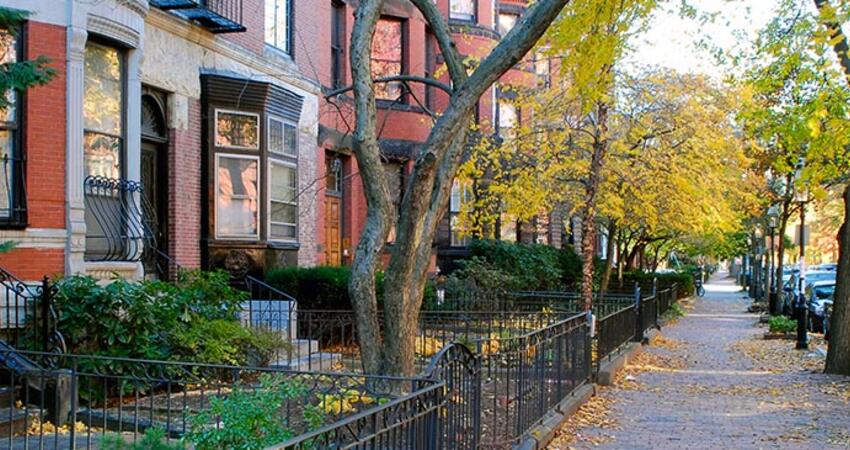
Q&A with Henry Cisneros on Aging, Health, and Housing
The Bipartisan Policy Center has launched a Health and Housing Task Force to help policymakers learn about the housing needs of the country’s aging population. The Task Force plans to look at U.S. models that combine housing, health and long-term services and will release policy recommendations aimed at improving quality of life for U.S. seniors.
How Housing Matters recently spoke with former U.S. Secretary of Housing and Urban Development Henry Cisneros, a chair of the task force, about the work ahead. His comments were edited for length and clarity.
How Housing Matters: What are the goals of the Task Force?
Henry Cisneros: It’s clear that the country is not ready in terms of the housing stock and housing arrangements for the surge of people who will be entering advanced years. The numbers of people over 65 will double over the next decades, and the numbers of people over 85 will triple. Most of those people would like to stay in their own homes for as long as they possibly can, and it’s in the country’s interest that that occurs because of the very high cost to society of putting people in assisted living or nursing facilities for long periods of time.
And there’s more and more evidence that living in a place that is conducive to peace of mind, that is safe, where seniors are protected from falls — often a person’s own home, adapted for their needs — saves their families money, saves society money, and shores up their general health and longevity.
HHM: Where will the funding come from?
Cisneros: We think it should come from a number of sources. From traditional housing programs, including retrofitting existing housing stock to remove dangerous obstacles. To add in features such as the zero-step entrance, widened hallways, enhanced lighting, upgraded restroom fixtures, lowered kitchen cabinets, larger dials and digital displays on kitchen appliances. Features such as a communication system that puts people in contact with security and family, the applications of technology to things like medicine dispensation.
All of those things we can do by building them into existing housing stock. After the energy crisis in the 1980s, we retrofitted homes to make them more energy efficient. We can do the same to create the home that people can live in over the course of an entire lifespan by fixing, retrofitting and renovating existing homes. That comes out of the housing side. Out of the health side, we need to take steps to make health care more accessible for an aging population. It may mean more community-based health. It may mean outreach into the individual home. It might mean hiring health care specialists who can be outreach people within communities.
We need to advance these concepts and then look for concrete ways to accomplish them. We have to celebrate the best practices.
HHM: What agencies need to collaborate to get this accomplished?
Cisneros: The Department of Transportation for mass transit initiatives and specialized mass transit such as van pools and other transportation for elderly and disabled persons. The Department of Labor because we’re going to see more people working for longer parts of their lives and we’ll need practices such as part-time work and other strategies that allow people to be active and be near home longer. And the Department of Education so that we can get more retired people assisting in schools as well as taking courses, both for enjoyment and retraining.
The whole paradigm of how we deal with advancing age across the spectrum of the society will change. I’ve been active with a program called Cities for all Ages, which thinks through municipal policies, amenities, facilities and programs so that we can create a city that works for people of all ages.
HHM: How do you think these needs are best tackled? All at one time or sector by sector?
Cisneros: I think it is valid to spend a lot of time focusing on this senior piece because that population is so large and growing larger. But the framework of Cities for all Ages works as well because creating walkable amenities is good for children, families and young professionals who are out trying to maximize their fitness, and then seniors. And we can create workout stations in public parks and walking trails that double as running trails, and bike trails, and all those things in our cities and make them suitable and life-enhancing for all ages. But, the aging population is growing rapidly so it does make sense to focus on that specific challenge.
HHM: Are there model programs to point to?
Cisneros: Well, there’re a lot of things that are coming together. For example, in Cincinnati there was an attempt to identify areas where there are large senior populations and then police them in a more specific way, such as officers on foot to check on that population. New York City is putting in place a zoning code for neighborhoods where older populations are more concentrated so that they can then think about what public services can fit there without zoning opposition, and some of those are health related. Cities are thinking through their physical streetscape, sidewalks and curb cuts for wheelchairs and persons who are disabled, length of street light changes, traffic flow and control — all with a view toward walkability for an older population.
I live in San Antonio, and we have a very beautiful park where senior amenities have been installed along the footpaths so people can stop and do biceps curls, sit-ups and chest presses and get in a workout in the course of their walk and exercise more than just the leg muscles. I’m excited about the fact that some cities are beginning to coordinate these things so that you do really have a city that is the best place for people of all ages.



